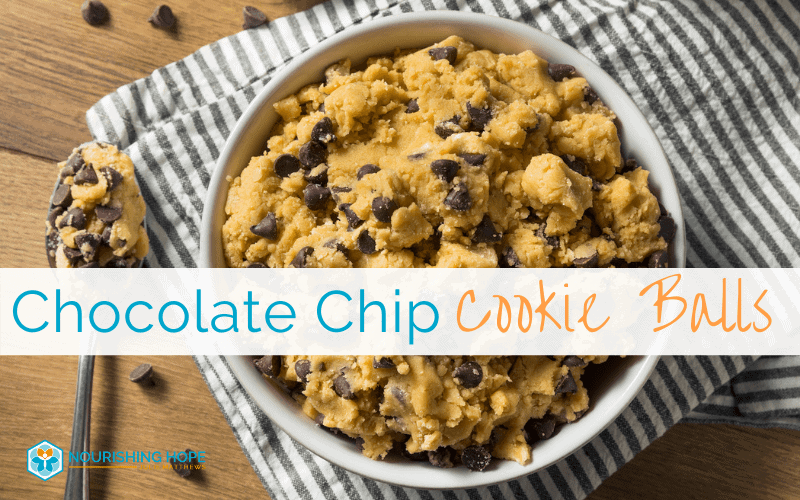
To make SCD compliant, use shredded coconut in place of chocolate chips and coat in melted oil and shredded coconut.
Use soy-free chocolate chips, such as those from Enjoy Life Foods.
Ingredients
- 1 ½ cups pitted dates
- ½ cup coconut butter
- 1 Tablespoons of coconut oil
- ½ cup GFCF chocolate chips (I prefer Enjoy Life brand, they are also soy-free)
Directions
In a food processor, process the dates for a minute or so into a paste
Add the coconut butter. Pulse a few times to crumble the coconut butter and mix it throughout.
Melt the coconut oil in a small pan, don’t overheat. It will melt easily. Turn on the food processor and pour the melted oil through the top allowing the dates and butter to blend into a smooth paste.
Put mixture into a bowl and stir in chocolate chips by hand.
To roll the balls, pick up a small handful of paste and press it into your hand and roll it into a little ball, less than 1 inch in diameter. Put the balls on a plate as you roll them. Place them in an airtight container and store in the refrigerator (in the summer) or a cool spot.



what is coconut butter ?
Hello! “To make SCD compliant, use shredded coconut in place of chocolate chips and coat in melted oil and shredded coconut.”
– Indeed, a healthy substitute. The coconut palm tree (Cocos nucifera Linn) is not called The Tree of Life for nothing. All of its edible components (oil, milk, meat, etc.) possess remarkable health-boosting properties. Just my two cents.
Cheers,
CoconutOilGuy
http://www.coconut-oil-central.com
Your Drugstore in a Bottle